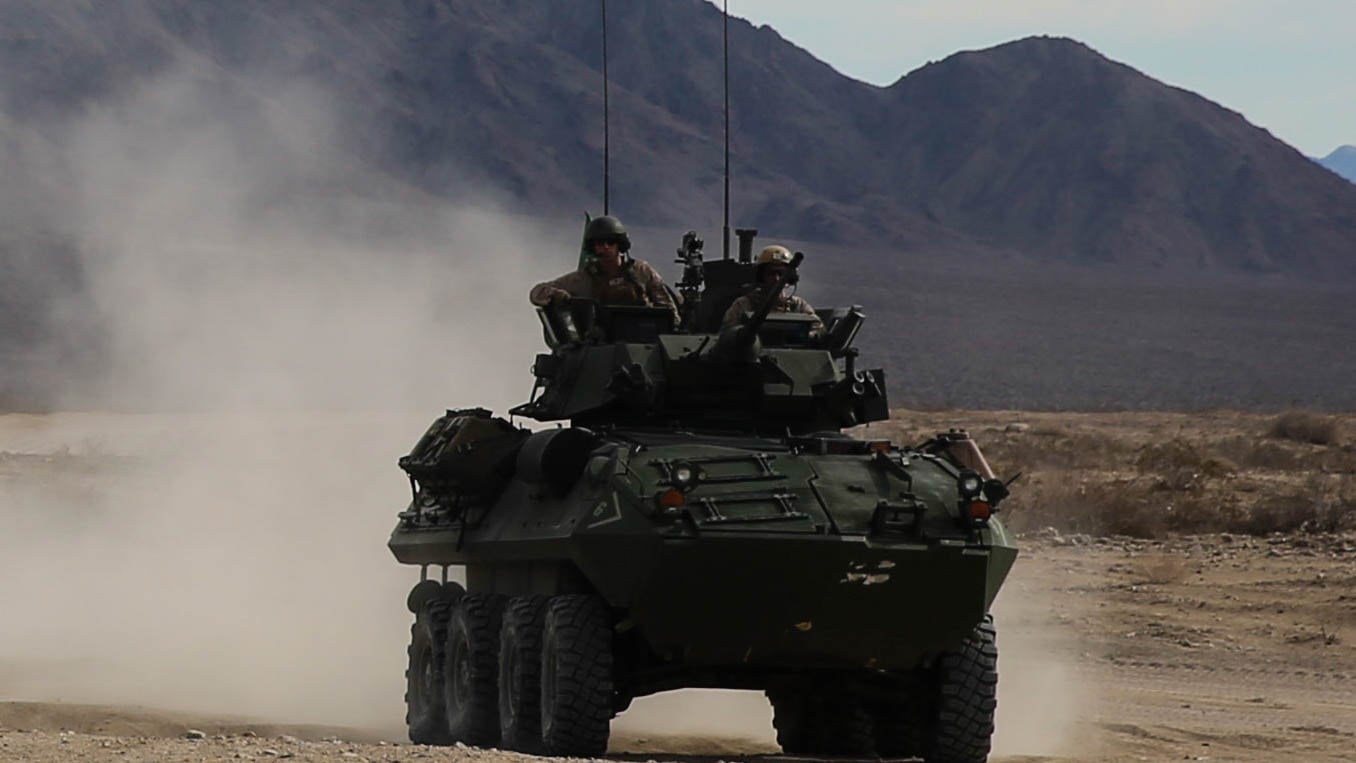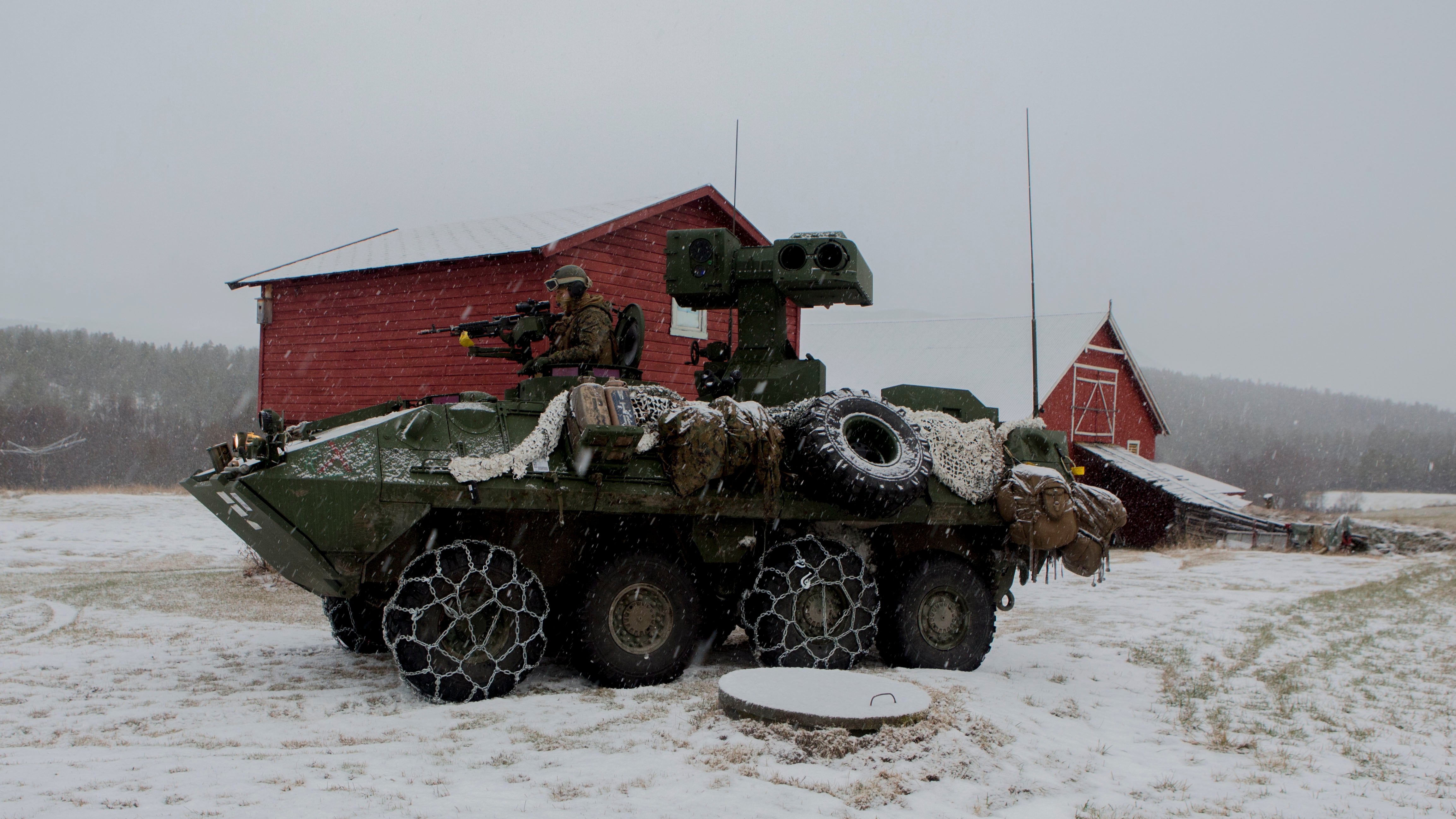The Corps has been making steady upgrades to one of its oldest tactical vehicles ― the light armored vehicle, or LAV ― over the past several years.
Now the Corps wants to boost the aging vehicle’s firepower with long-range precision fires capabilities, by using either loitering munitions or missiles that could have swarming attributes.
It’s part of the Corps’ plan to provide a mounted organic precision fires capability within light armored reconnaissance, or LAR, battalions.
On Feb. 22, the Corps submitted a request for information on the government’s business opportunities website known as FedBizOpps, seeking input from industry leaders on available technologies to build the organic precision fires capability within the LAR battalions.
RELATED

The Corps is relatively wide open with what it wants.
The Marines are looking for “what is out there” and “whether that be a loitering munition or that be a missile," Lt. Col. Bradley Sams, Marine Corps Systems Command’s program manager for fires, said during a media roundtable Monday. The Marines want to see “what’s in the realm of possible.”
Sams said the Corps wants the new precision fires system’s range to go a beyond the 81mm mortar systems that already are part of the LAR company.
Ranges of the new system could span between 7,000 meters to 100 km, Sams explained.
The Corps wants to mount the new fires system on an LAV within an LAR company to augment 81mm mortars, which will support the LAV platoons when they push out forward, according to Jeff Nebel, Marine Corps Systems Command’s fire support coordination team lead for fires.
“What we are really looking to do here is push the envelope, so to speak, and build tomorrow’s system today,” Nebel said.
And munitions could include a combination electronic or kinetic attack, Nebel explained.
Sams said that the plan to add an organic mounted precision fires system to LAR came as a result of testing and experimentation conducted by Marine Corps Warfighting Laboratory, or MCWL, over the past couple of years.
MCWL has been working with a number of vendors and experimenting with controlling swarming drones.
As of July 2018, the Corps has managed to successfully test a single Marine operator controlling a swarm of six drones — the goal is to eventually manage 15 with minimal operator burden.
The Corps pushed out an anti-tank LAV version that boasts automated tube-launched, optically-tracked, wire-guided, or TOW, missile firing turret system in September 2017.

That LAV variant made its European debut during the NATO-led Trident Juncture exercise hosted by Norway in fall 2018.
The Corps expects to have a contract for the new fires system by the first quarter of fiscal year 2020, and fielding could kick off by fiscal 2022, according to Nebel.
Shawn Snow is the senior reporter for Marine Corps Times and a Marine Corps veteran.
